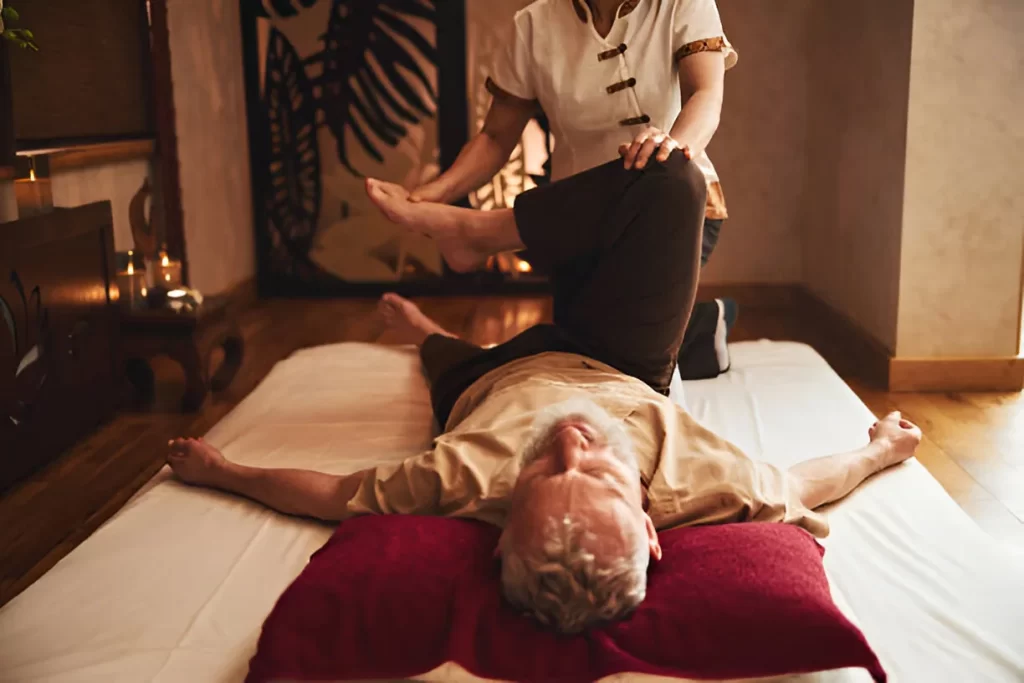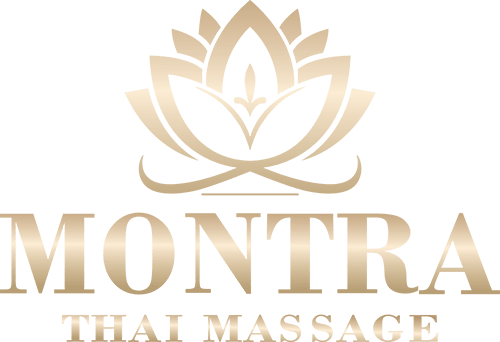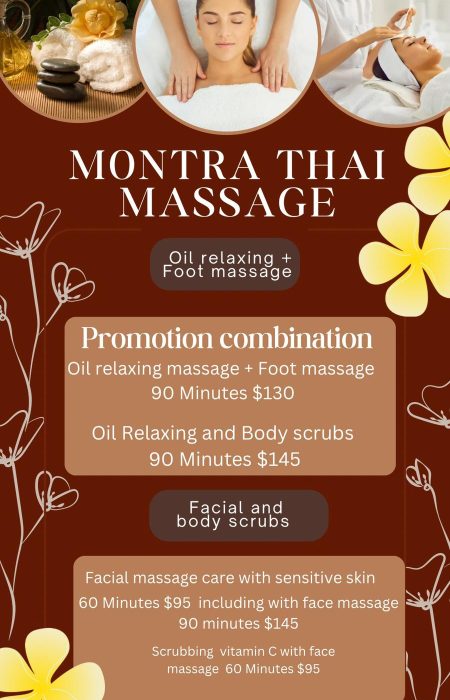The history of Thai massage is a fascinating tapestry woven through centuries of cultural exchange, spiritual practice, and a deep understanding of the human body. Originating over 2,500 years ago, this ancient healing art has transcended time and geography, finding its place in modern wellness practices around the world. Today, establishments like Montra Thai Massage bring the essence of this tradition to urban centers, offering authentic Thai massage in Sydney that honors its rich heritage.

Origins Rooted in Spirituality and Healing
The story of Traditional Thai massage begins with Jivaka Kumar Bhaccha, known in Thailand as Shivago Komarpaj. A legendary figure, he was a physician to the Buddha and the Magadha king Bimbisara in the 5th century BCE. His contributions to medicine and the development of Thai massage are revered, earning him the title “Father Doctor” in Thai tradition.
As Buddhism spread from India to Southeast Asia, so did the practices of healing and wellness associated with it. Monks traveling to Thailand carried not only spiritual teachings but also knowledge of Ayurveda and yoga. This fusion of Indian, Chinese, and Southeast Asian medical traditions laid the foundation for the unique system of Thai massage.
The Ancient Art of Nuad Boran
Nuad Boran, meaning ancient massage, is the traditional form of Thai massage that emerged from these early influences. It is based on the concept of energy lines, or Sen, which are thought to run throughout the body. Practitioners believe that by manipulating these lines through pressure and stretching, one can balance the body’s energy, alleviate pain, and promote overall wellness.
This practice is deeply intertwined with Buddhist mindfulness and meditation. The therapist performs the massage in a meditative state, creating a mindful connection with the recipient. This spiritual dimension distinguishes Traditional Thai massage from other forms of bodywork.
Evolution Through the Ages
Over the centuries, the history of Thai massage saw it evolve with contributions from various cultures. The influence of Traditional Chinese Medicine introduced acupressure and reflexology techniques, enhancing the therapeutic potential of Thai massage.
Despite its widespread practice, much of the knowledge was transmitted orally or through limited manuscripts, many of which were lost during periods of conflict. In the 19th century, King Rama III recognized the importance of preserving this cultural treasure. He commissioned scholars to inscribe medical texts, including massage techniques, on the walls of Wat Pho temple in Bangkok. These inscriptions remain a vital source of knowledge and are considered a public university of Thai medicine.
Principles and Techniques
Thai massage is often described as a combination of acupressure, Ayurvedic principles, and assisted yoga postures. Unlike Western massages, it is performed on a mat on the floor, and the recipient remains clothed in comfortable attire. The therapist uses hands, elbows, knees, and feet to apply rhythmic pressure and guide the recipient through a series of stretches.
Key techniques include:
- Joint Mobilization: Enhancing flexibility and range of motion.
- Muscle Compression: Improving circulation and relieving tension.
- Acupressure: Stimulating specific points along the Sen lines to promote energy flow.
- Passive Stretching: Similar to yoga, it helps in elongating muscles and reducing stiffness.
This holistic approach addresses physical, emotional, and spiritual aspects of well-being, embodying the essence of Traditional Thai massage.
Thai Massage in the Modern World
With growing global interest in alternative and holistic therapies, Thai massage has gained international recognition. Training centers and spas dedicated to Thai massage have emerged worldwide, promoting its practices and benefits.
In cities like Sydney, the demand for authentic experiences has led to the establishment of specialized centers such as Montra Thai Massage. Offering genuine Thai massage in Sydney, Montra brings skilled therapists trained in traditional techniques. They provide an oasis of tranquility amid the city’s bustle, allowing clients to experience the profound effects of this ancient healing art.
The Benefits of Thai Massage
The enduring popularity of Thai massage is largely due to its numerous health benefits. Among them are:
Physical Benefits
- Improved Flexibility: The stretching techniques loosen tight muscles and enhance joint mobility.
- Pain Reduction: Effective for chronic conditions such as back pain, arthritis, and headaches.
- Enhanced Circulation: Stimulates blood flow, promoting healing and organ function.
- Posture Correction: Aligns the body, reducing strain and imbalances.
Mental and Emotional Benefits
- Stress Relief: The meditative aspect calms the mind, reducing anxiety and stress.
- Increased Energy Levels: Balancing the body’s energy pathways leads to a revitalized feeling.
- Emotional Balance: Encourages the release of emotional tensions held within the body.
These Thai massage benefits contribute to an overall sense of well-being, making it a sought-after therapy for holistic health.
Montra Thai Massage: Upholding Tradition in Sydney
In the heart of Sydney, Montra Thai Massage stands as a testament to the enduring legacy of Thai massage. Committed to providing authentic services, Montra employs therapists who have undergone rigorous training in Thailand’s renowned massage schools.
Their offerings reflect the diversity of traditional practices, from full-body massages to targeted therapies. Clients seeking Thai massage in Sydney find at Montra not just a service, but an immersive experience that respects the history of Thai massage.
By incorporating elements like traditional décor, soothing music, and the aromatic scents of Thai herbs, Montra creates an environment that transports clients to the tranquil settings of Thailand’s temples and spas.
The Cultural Significance of Thai Massage
Beyond its therapeutic applications, Thai massage is deeply rooted in Thai culture and spirituality. It is a form of compassionate touch, reflecting the Buddhist principles of metta (loving-kindness). Practitioners approach each session with mindfulness and respect, fostering a healing connection that transcends the physical level.
The practice is also a communal activity in Thailand, often performed among family members and within communities. It serves as a means of bonding and nurturing relationships, highlighting the cultural importance of touch and care.
Preserving the Heritage
As Thai massage continues to gain global recognition, efforts to preserve its authenticity are crucial. The Thai government and various organizations have initiated programs to support traditional practitioners and promote standardized training.
Internationally, accreditation bodies ensure that practitioners meet the ethical and professional standards that honor the history of Thai massage. This commitment safeguards the practice from dilution and commercial exploitation.
Embracing Thai Massage Today
For those seeking to explore the depths of Thai massage, it is essential to approach it with openness and respect for its origins. Whether experiencing it at a local spa or traveling to Thailand, understanding its historical context enriches the experience.
Practitioners like those at Montra Thai Massage serve as ambassadors of this ancient tradition. By choosing such establishments, clients not only receive the Thai massage benefits but also support the continuation of a cultural heritage that has healed and nurtured people for millennia.
Conclusion
The history of Thai massage is a remarkable journey from ancient healing practices to a globally recognized wellness therapy. Rooted in spirituality, enriched by cultural exchanges, and preserved through dedication, it embodies a holistic approach to health that resonates with today’s desire for balanced living.
As we embrace Traditional Thai massage, whether through experiencing it firsthand or incorporating its principles into our lives, we participate in a legacy of healing touch. Establishments like Montra Thai Massage make this legacy accessible, offering authentic Thai massage in Sydney that honors the tradition while catering to modern needs.
In a world where stress and disconnection are common, the timeless practice of Thai massage provides a pathway to restoration and harmony. It reminds us of the power of touch, the importance of balance, and the enduring wisdom of ancient healing arts.

 Digital Transformation By
Digital Transformation By 